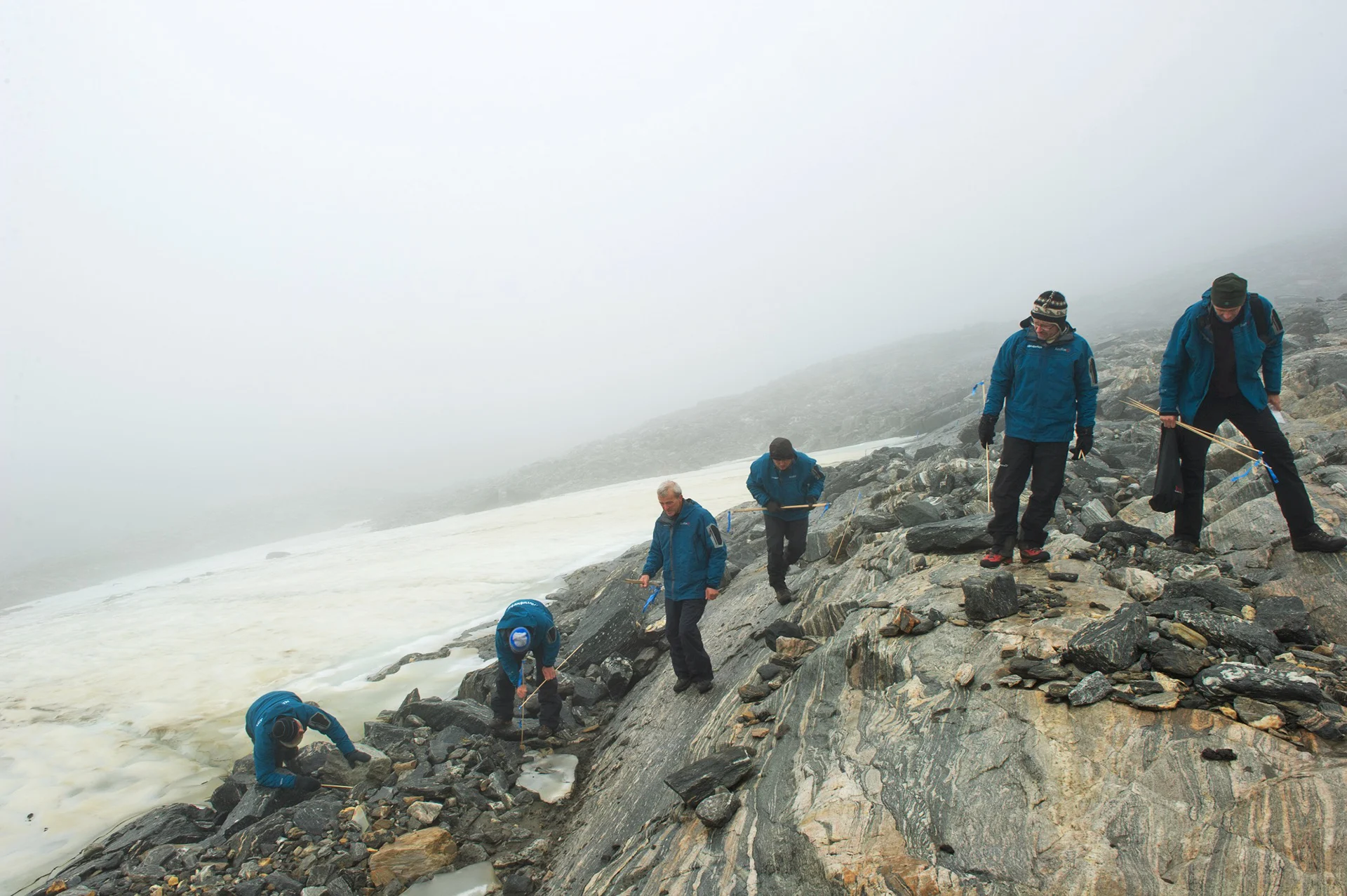
Lost Viking ‘highway’ and artifacts revealed by melting glaciers
Objects that were found on this Viking mountain pass in Norway include mittens, knives, horseshoes and walking sticks.
Melting glaciers in Lendbreen, Norway have revealed a lost mountain pass and artifacts that were used by the Vikings. A new study details these findings and the work that researchers have done at this site since it was first uncovered in 2011.
The researchers believe the mountain pass was used for local traffic, trade and long-distance travel during the Roman Iron Age in 300 AD to the Viking Age in 1000 AD. Their fieldwork found an undated stone-built shelter and a large number of stone structures that could be landmarks or memorials, which indicates that this mountain pass had some type of significance to the people travelling through.
SEE ALSO: Dead bodies are turning up on Mount Everest, here's why
Objects recovered from the Lendbreen mountain pass include horseshoes and skulls, which indicates that horses were used as a mode of transportation by farmers that made dairy products, such as butter. The researchers note that livestock was likely moved to higher elevations during the summer months and lowlands in the winter.
Other objects include mandibles, walking sticks, knives, shoes and mittens. Eight objects that were dated with radiocarbon include five arrows, a ‘scaring stick’ and two reindeer antlers, which suggests that hunting also took place at this site.
The study states that many of the uncovered objects were likely lost by travellers on their journeys, but say that other items, such as a well-preserved Iron Age tunic, are harder to understand. “It is possible that these items of clothing were discarded in dire circumstances, such as the irrational behaviour associated with hypothermia,” the researchers note.
Some of the items have yet to be identified because the researchers have nothing to compare the unique objects to. A Bronze Age ski that was broken into four pieces was also found in Lendbreen, which means that human activity in this region could date back to 1750–500 BC.
The study states that rising global temperatures have caused permafrost and glaciers in Norway to melt, which has allowed archeologists to access remote sites that were previously inaccessible. Central Norway has yielded the largest number of recorded finds from mountain ice and over 3,000 artifacts have been discovered in Norway’s Oppland County.
Top Photo Credit: Credit: Glacier Archaeology Program












